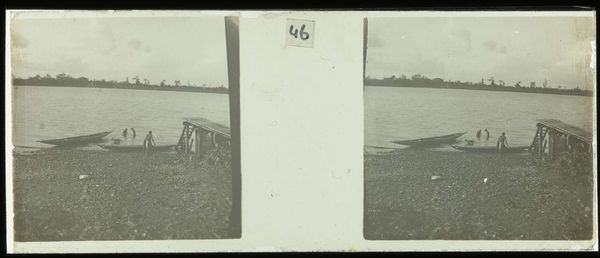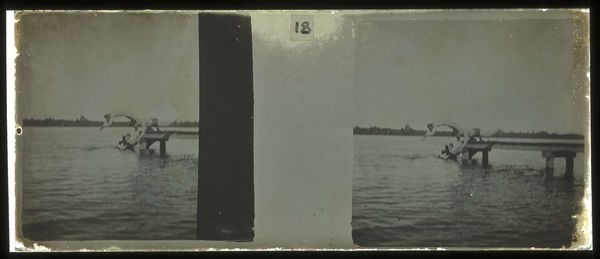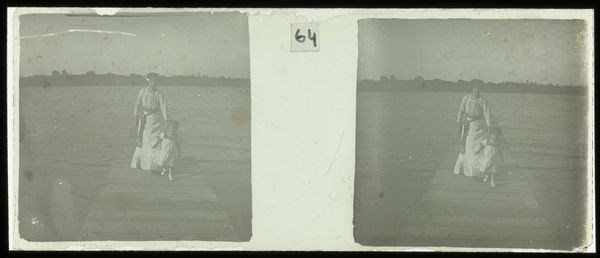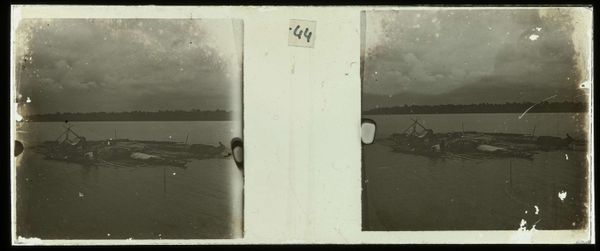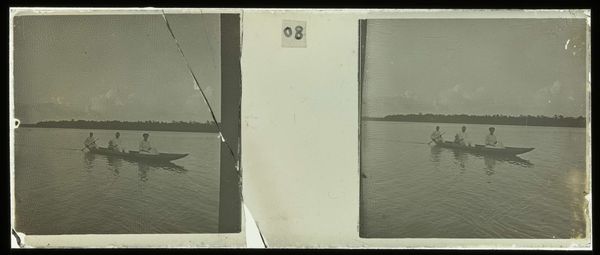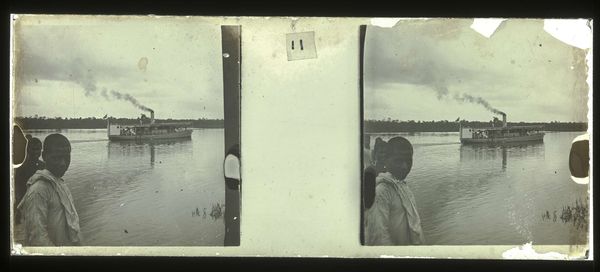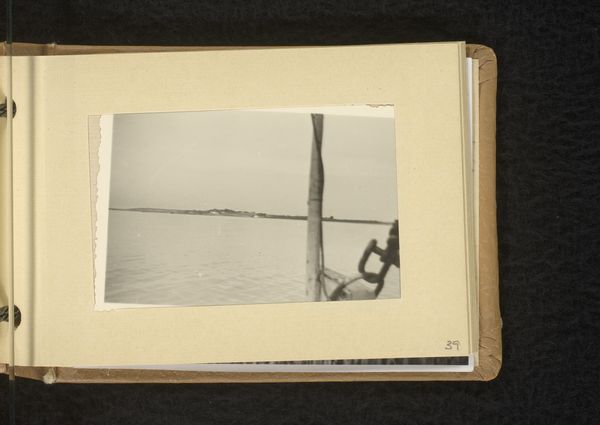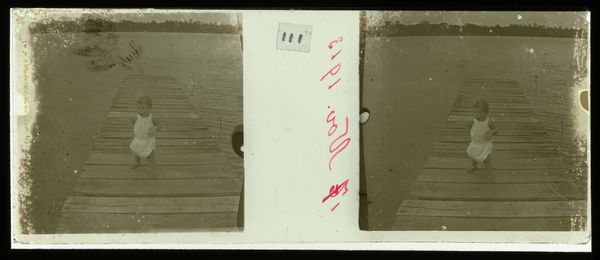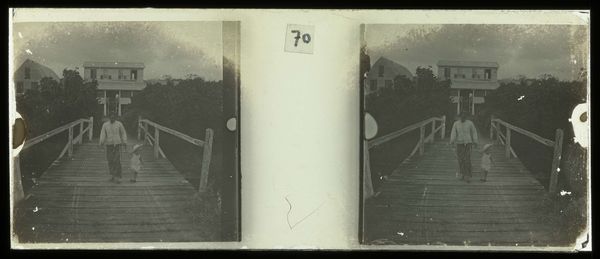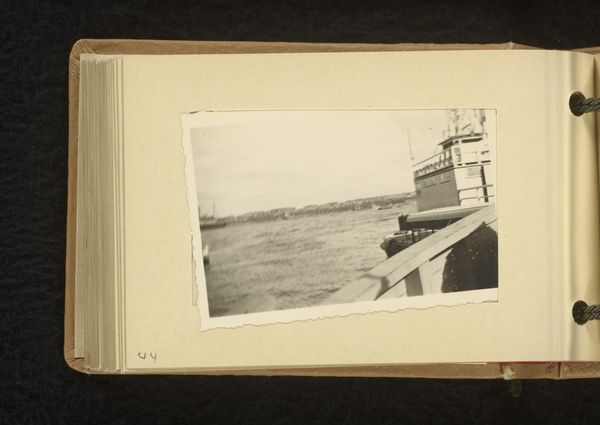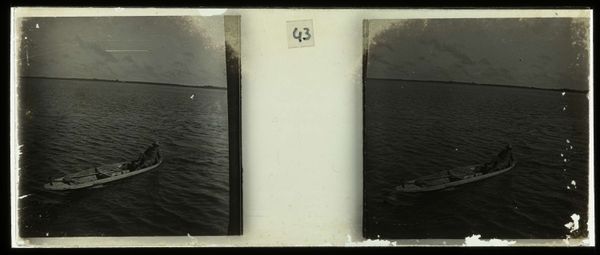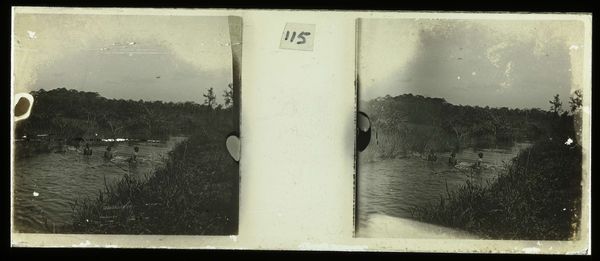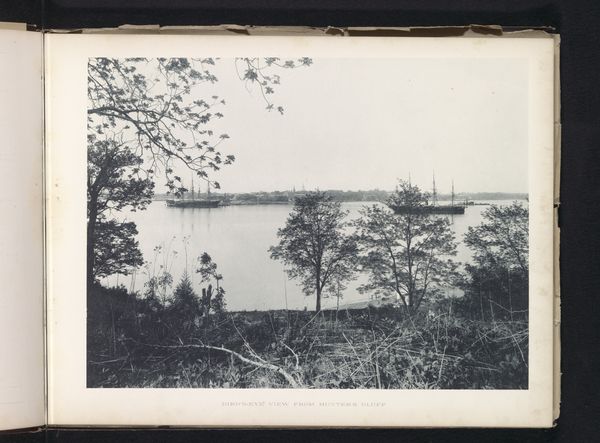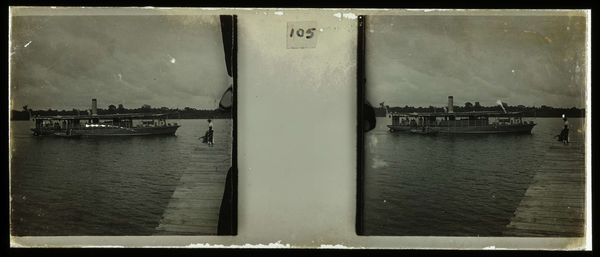
photography, gelatin-silver-print
#
landscape
#
photography
#
gelatin-silver-print
#
genre-painting
Dimensions: height 4.5 cm, width 10.5 cm
Copyright: Rijks Museum: Open Domain
Curator: Here we have “Visite gaat weg van plantage Accaribo,” a gelatin-silver print from between 1913 and 1930, credited to Theodoor Brouwers and currently held in the Rijksmuseum. Editor: It’s evocative. This small boat loaded with figures in white against the darker river—it’s staged, yet feels like a fleeting moment captured. Almost melancholy. Curator: Indeed, it belongs to a wider genre-painting theme and highlights how photography was employed to document aspects of daily life and social structures within the colonies. The act of leaving—the “visite gaat weg”—suggests departures but also implies the very act of visiting as a social ritual imbued with colonial power dynamics. Editor: I find myself focused on the materiality of the print itself. The tones of grey, the visible imperfections, give a tangible sense of time and place. Look closely and you see this wasn't just a quick snap but involved some level of photographic process—development, fixing, printing onto silver gelatin. It speaks to a deliberate crafting of the image. Curator: Absolutely, Brouwers isn't merely recording but constructing a narrative. It begs questions about the relationship between the photographer, his subjects, and the audience viewing the image then, as well as now. Whose story is being told, and what perspectives are silenced or highlighted? Editor: And what about the labor? The visible labor of the rowers, versus the implied labor in producing the photograph itself? We must consider the hands involved in planting, harvesting, and processing whatever goods originate from that "plantage." The boat isn't merely transporting individuals; it represents the movement of wealth and resources derived from exploited land and labor. Curator: It’s interesting how it raises questions about representation and agency during that era of colonialism, in particular about who controlled visual narratives and for what purpose. Editor: Precisely. It makes us reconsider the assumed neutrality of the photographic image as an objective recorder. Curator: Looking at this today encourages a deconstruction of its layered historical, social, and political contexts. Editor: And appreciating the skill of Brouwers by the very specific choices he made as the artist who produced the image as well.
Comments
No comments
Be the first to comment and join the conversation on the ultimate creative platform.
